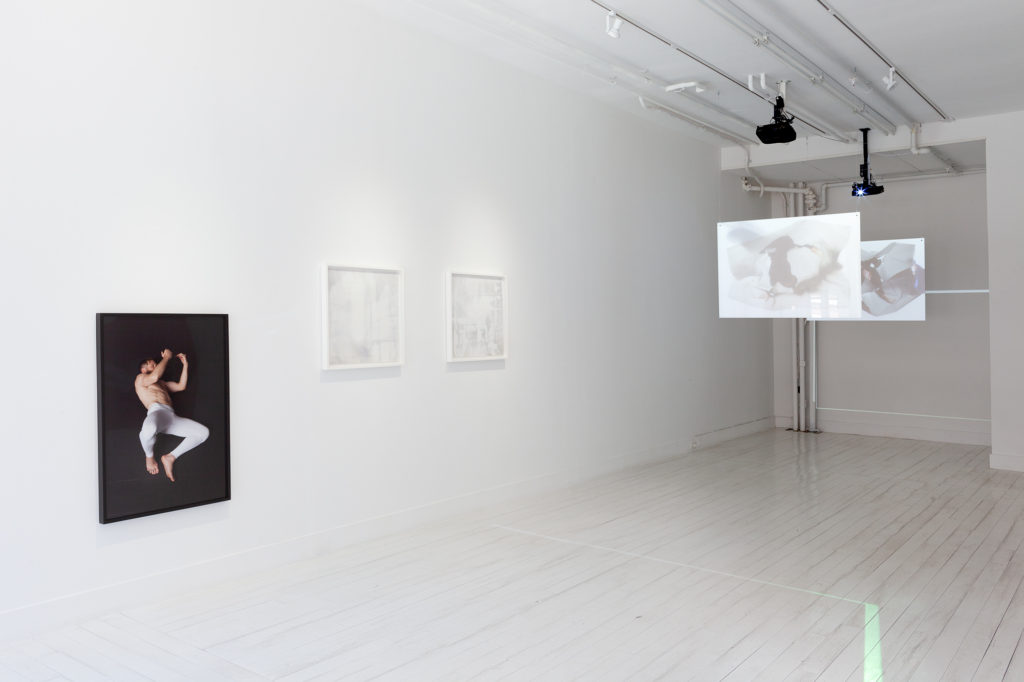by Katie Vida
In a 2016 interview in The Paris Review Douglas Crimp stated of his early experiences of George Balanchine’s performances at Lincoln Center, “our seats were always at a high oblique angle… looking back I think it allowed us to read the proscenium like a Derridean frame.” For photographer Tad Beck, frame and the process of upending photography’s ability — or inability — to capture often reflect questions of orientation as a means to highlight temporal slippages.
This is one through-line in Beck’s recent exhibition Technique/Support at Grant Wahlquist Gallery in Portland, Maine. The exhibition included three series hung at different heights; the press release likens its installation to “a chamber music score.” In so doing, the show requires looking down or up to see works that have also been created from a variety of heights, bringing the viewer into conversation with the artists’ various vantage points of making in his Vinalhaven studio.
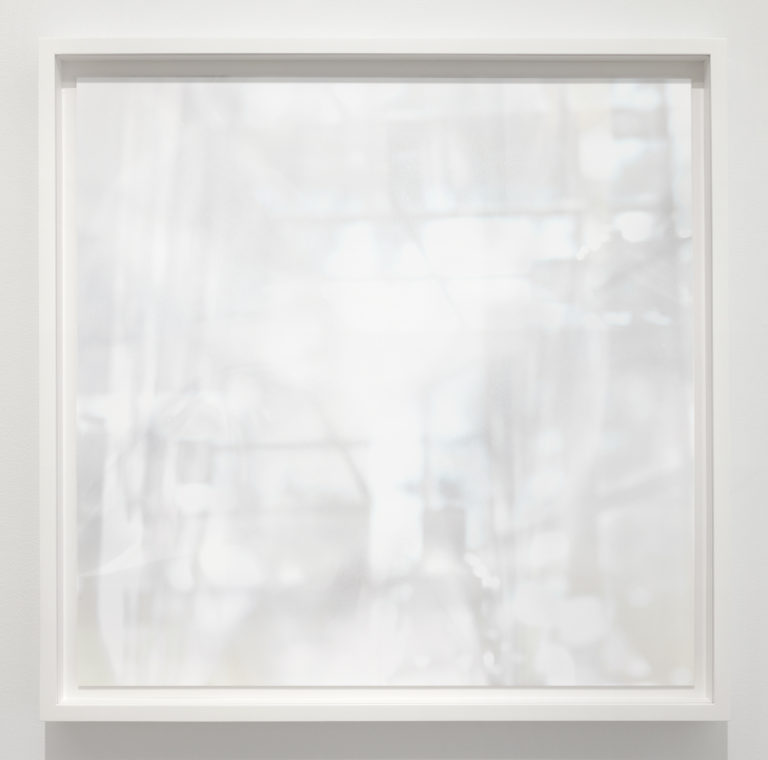
In the Blanks series Beck begins his process by photographing white gloss photographic paper. There is a nod here to Fluxus humor in starting with the most essential component to photography’s legibility — the paper on which the visual rests — to build a series of photographs. Through the processes of photographing and re-photographing the paper, at some interval under glass and with the addition of spray paint (a painting tool used in this instance to dodge the photograph), shadow and window light from the artist’s studio floor are captured, as is a distillation of what looking — and by extension, photographing — means. This seemingly exasperating process yields glowing shadows and drip marks, aptly presented in square format, perhaps as much a nod to medium format photography’s past as to the prevalence of Instagram. A discordant tension exists between how quickly culture now consumes photographs and how rigorous the artist is in analyzing its material and phenomenological potentiality.
The exhibition’s press release includes artists that inspire Beck such as Cy Twombly and sound artist Alvin Lucier who, like Beck, is concerned with the physical properties of his chosen media. Is Blanks perhaps a kindred tribute to I am Sitting in a Room (1969)? The script for Lucier’s piece, the sonic experience of which gradually mutates over 45 minutes, reads:
I am sitting in a room different from the one you are now. I am recording the sound of my speaking voice and I am going to play it back into the room again and again until the resonant frequencies of the room reinforce themselves so that any semblance of my speech, with perhaps the exception of rhythm, is destroyed […]
The Blanks series starts to function as layers of paint and fuzzy residue that, much like Lucier’s voice, mutate, “as a result of their resonant frequencies,” into a similarly droning echo chamber (in this case, of light). What process negates in order to enhance are part and parcel of the works’ ruminations on notions of orientation, locale, or even media specificity.
One cannot separate this work and its discourses from Robert Rauschenberg’s White Paintings which Rauschenberg referred to as clocks, saying, “if one were sensitive enough to the subtle changes on their surfaces one could tell what time it was and what the weather was like outside.” In warm and cool tones of cast shadow, I can imagine Beck’s world outside his studio on coastal Maine might also be white with snow during the time of the works’ making.
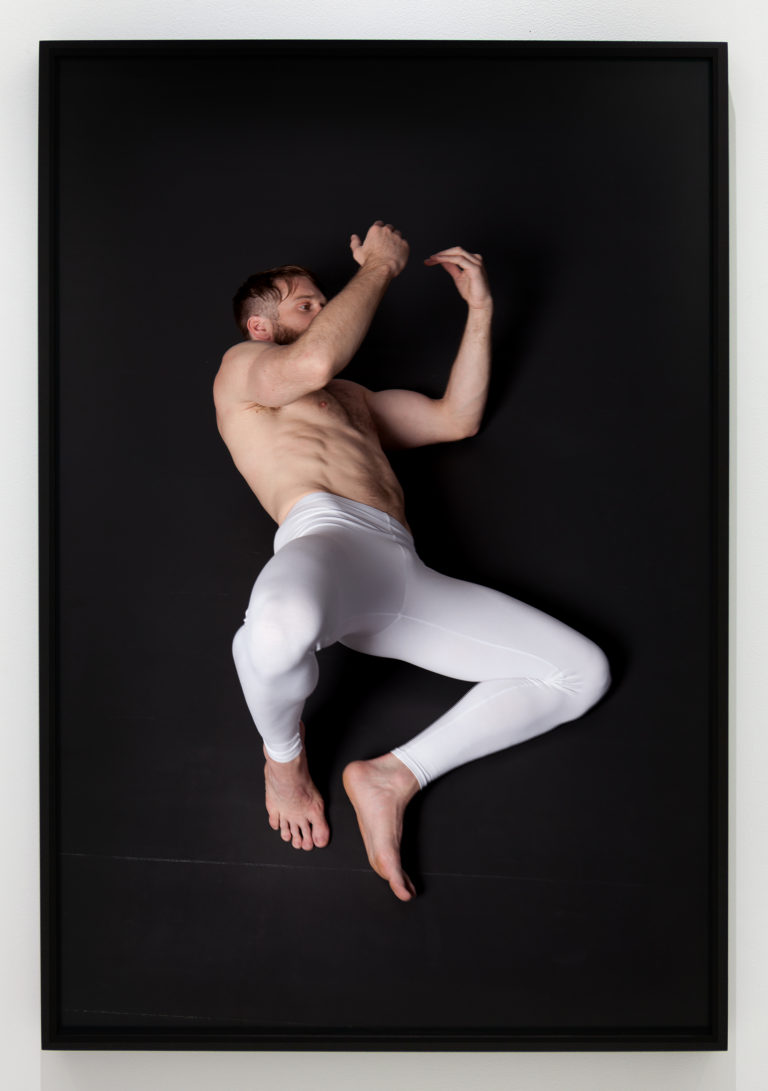
Sara Ahmed poses the question in Queer Phenomenology: “What would it mean for queer studies if we were to pose the question of ‘the orientation’ of ‘sexual orientation’ as a phenomenological question?” The sexual potential of orienting photography is another way in which the artist addresses his subject matter. Amidst the Blanks series, and installed much lower than eye level, are several seemingly commercial photographs of an attractive white male model of physique-culture build (my associations go to Kenneth Anger’s shirtless flexing sailor in Fireworks). He wears white leggings set against black backdrop in several athletically charged positions. Colby, as the series is called, turns out to be Colby Keller, a model known for his performances in gay pornography. In Beck’s series, the restaging of positions sourced from porn stills is modest, almost deceptively austere; the frame is re-enacted without male counterpart or locale. Erasing bedroom, and another equally attractive stud, from the equation isolates the condition of what these sexual positions perform without overt context. Though the fantasy is gone, the reenactment still becomes its stand-in, the traces of which are suggested in the way Keller coils his hand in one frame as if holding an absent form. It is as if we are watching a vaudevillian scene unfolding in which the prop is signaled in the air by the exaggerated way in which the performer moves their body to suggest it.
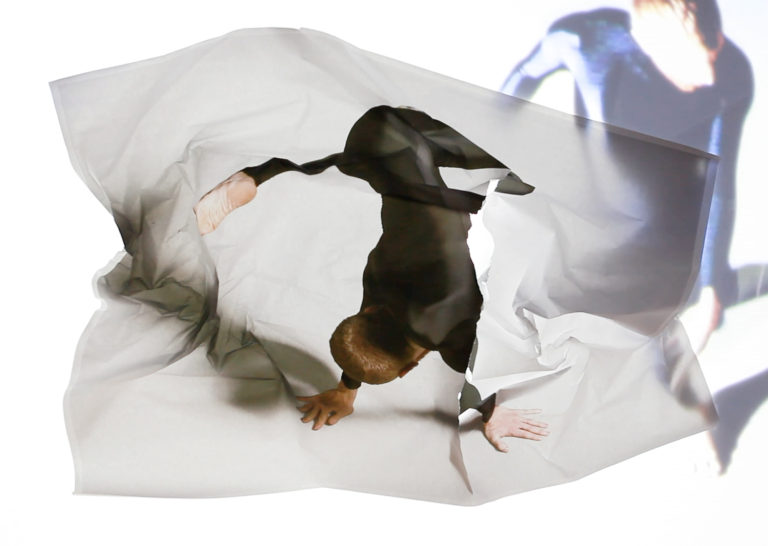
The only experience of above-ness we have viewing dance is as consumers of it in theaters — choreographers tend to work on the same plane as that of dancers. In Condenser, a multi-channel video work, Beck places himself in the position of hovering photographer and choreographic intruder combined as he works with Maine-based dancer Riley Watts to initiate photographs alongside video documentation as Watts rehearses dance phrases from his repertoire. Images from this first act are printed then placed upon studio floor, the performer and photographic paper coalesce as Watts distresses them while re-performing dance phrases, enacting new traces both of dance and photographic referent. The photographic evidence of this collaboration is then backlit by the original video documentation of the dancer’s movement and re-filmed, presented on two suspended plexiglass screens and inclusive of a thin lip or remnant of the projected image on the back wall. Returning to this notion of mutation and orientation: are we looking at a photograph, a video of a dance phrase, a dancer, or all three at once? How does one record a dance phrase? I think here to the 1920s dance notations of Rudolph Laban (Labanotation) as well as Trisha Brown’s improvised floor drawings, and recent “dance on film” made specifically for the video camera. What does it then mean to perform, to photograph, then to re-perform as in a newfound repertory or feedback loop? Riffs on darkroom technique throughout the show from dodging (Blanks), masking (Colby), and condensing (or enlarging) in Condenser seek analogue ways of interpreting in-frame what a camera and its subject can do on their own terms.
If the work requires philosophical relief — or contrast — Beck lastly provides a single photograph, placed within a few feet of the ceiling to the left of the gallery’s entry (and within proximity to a work from the Colby series). The close cropped image is of a resting black dog looking upward as if awoken from sleep, perhaps from the sound of the shutter clicking. It reminds the viewer of the simple, uncomplicated pleasure of looking at a snapshot while highlighting the tremendous facility the artist has presented in the surrounding body of work, reflecting time unravelling photographically, its “resonant frequencies.”
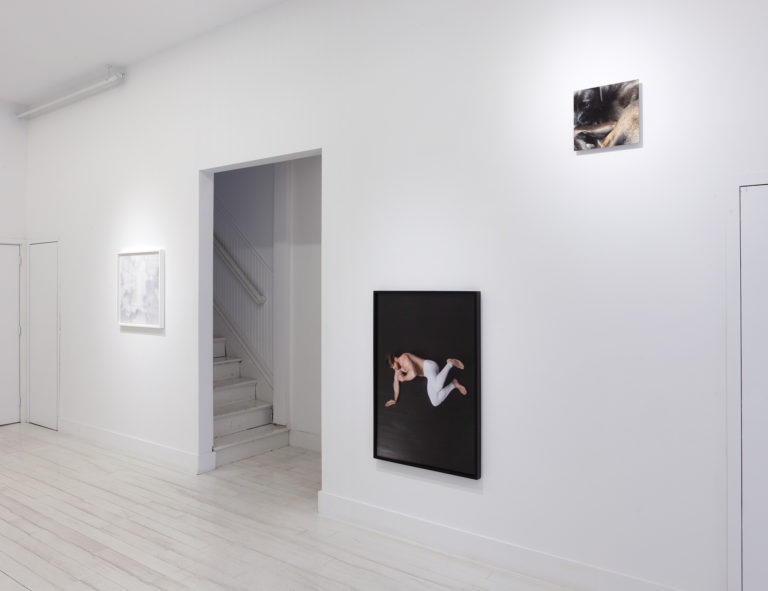
Tad Beck’s Technique/Support was on view at Grant Wahlquist Gallery from June 29 through August 16, 2019.
Grant Wahlquist Gallery
30 City Center, 2nd Floor, Portland, ME | 207.245.5732
Open Wednesday to Saturday 11am to 6pm (8 p.m. on the first Friday of each month during exhibitions), and by appointment.

Katie Vida (Brooklyn, NY) is an interdisciplinary visual artist and Adjunct Assistant Professor in the MFA program at Maine College of Art. In addition, Vida has served as independent curator at venues including Franklin Street Works (Stamford, CT), Yale School of Art (New Haven, CT), and The Lab (San Francisco, CA), among others.

